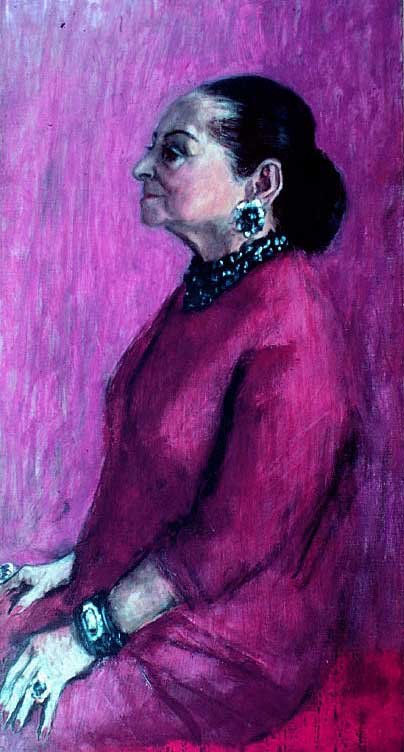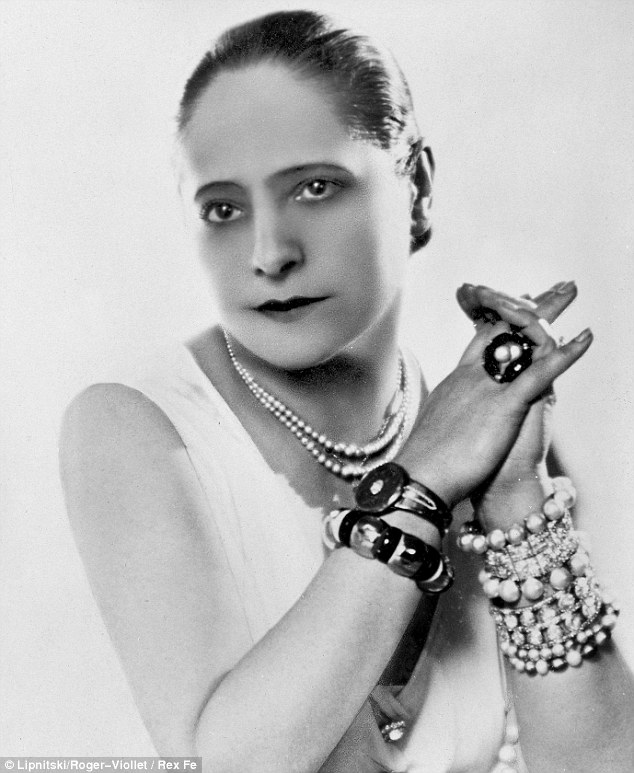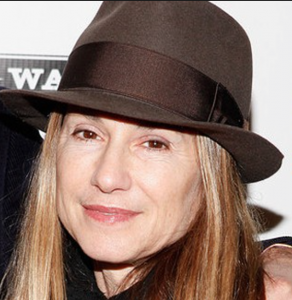 Helena Rubinstein was the world’s first female self-made millionaire. She commissioned portraits from artists ranging from Pablo Picasso to Andy Warhol, and she hobnobbed with the likes of Coco Chanel, Eleanor Roosevelt, Virginia Woolf, Josephine Baker, Audrey Hepburn, Colette, and James Joyce. She was a legendarily generous philanthropist and collector who trumpeted East Asian, South American, and African art decades before her peers, and who took a bag lunch to work every day. She was a four-foot-ten, painfully shy Polish girl from a poor Jewish family who, at age thirty, fled to Australia to avoid an arranged marriage – and went on to marry a bona-fide prince twenty-three years her junior after she’d made her fortune as the first cosmetics magnate. Add in the fact that she popularized bright-red lipstick (a hallowed achievement unto itself), and there are no two ways about it: Helena Rubinstein was one of the most remarkable women of the twentieth century.
Helena Rubinstein was the world’s first female self-made millionaire. She commissioned portraits from artists ranging from Pablo Picasso to Andy Warhol, and she hobnobbed with the likes of Coco Chanel, Eleanor Roosevelt, Virginia Woolf, Josephine Baker, Audrey Hepburn, Colette, and James Joyce. She was a legendarily generous philanthropist and collector who trumpeted East Asian, South American, and African art decades before her peers, and who took a bag lunch to work every day. She was a four-foot-ten, painfully shy Polish girl from a poor Jewish family who, at age thirty, fled to Australia to avoid an arranged marriage – and went on to marry a bona-fide prince twenty-three years her junior after she’d made her fortune as the first cosmetics magnate. Add in the fact that she popularized bright-red lipstick (a hallowed achievement unto itself), and there are no two ways about it: Helena Rubinstein was one of the most remarkable women of the twentieth century.
Yet, since her death fifty years ago this week (she lived to age ninety-two), Rubinstein’s legacy has faded. Her once-powerful beauty company has changed hands twice and is now an ugly stepchild of L’Oreal. Her salons, once considered glamour incarnate, have closed their doors. Ask a person under forty who she was, and chances are good that they’ll draw a blank.
In the last year, however, efforts have been made to rectify this: Michèle Fitoussi’s Helena Rubinstein: The Woman Who Invented Beauty offers a thrillingly comprehensive analysis of the woman known to all as “Madame” – warts, concealer, and all. Better yet, the Jewish Museum has just published Helena Rubinstein: Beauty Is Power, a mouth-watering coffee-table book to complement its exhibition of her collections and obsessions, including her jewels, paintings, statues, gowns, home furnishings, and, of course, cosmetics packaging and advertisements. From these two books emerges a lady who trusted her intuition above all else – who encased her short, thick frame in floor-length gowns of red and purple silks, who wore enormous, unfashionable chokers of sapphires and rubies and black pearls and carved ivory, who worked roughly twenty-three hours a day, who speared presidents and paupers alike with her hawkish stare, who spoke a mysterious hodge-podge of four languages (French, English, Yiddish, Polish) and was brutally hilarious in each of them (There are no ugly women, only lazy ones!), and who was always true to herself and her heritage. The definitive Helena story: In 1941, Rubinstein wanted to rent a Park Avenue penthouse apartment but was told the building didn’t allow Jews. So she promptly bought the whole building – and installed herself in the triplex at the top
It seems so obvious that a biopic – a sweeping, smart and fabulously Technicolor epic – is the next step to establish Rubinstein’s rightful place in the twenty-first century. I’d be surprised such a film didn’t exist already except Hollywood has a long history of overlooking powerful women who aren’t traditionally beautiful. The irony, of course, is that the fact that she wasn’t traditionally beautiful was practically the point of Madame’s existence. To her, beauty wasn’t just in the eye of the beholder; it was in the eye of the beheld. She transformed her appearance and her environment to please herself, and made it her life’s work to teach other women – poor and rich alike – to do the same. (Madonna owes an awful lot to this broad, as do all the girls who owe a lot to Madonna.) Rubinstein constantly instructed female consumers to “follow what direction your subconscious is taking. It will allow you to develop style – your own instinctive style.”
I’m not going to beat around the bush here since Helena never did. (Reportedly, she was a bit rough as an employer and a mother.) Though directors like Sofia Coppola and Mira Nair could do justice to her aesthetics, they lack the chops to capture the entrepreneur’s complex historical impact. If Pedro Almodóvar worked in the United States, I’d hand him this project in a heartbeat – his films boast a balance of ham and heart that Helena, a known cinephile, would have adored – but in his stead I offer Todd Haynes. We know the “Far From Heaven” director will do whatever necessary to capture the unique brilliance of a real-life subject (consider his wonderfully out-there biopics about Bob Dylan and Karen Carpenter) and we know his mastery of color and form will render every frame so stunning that they’d befit the lady’s own gloriously appointed chambers.
As for Madame herself, she must be played by Holly Hunter. Small and fierce, with a burning gaze, a sublime impatience, an ageless compassion, and an uncanny ability to look any age in any age, Hunter is the only living actress who could bring Rubinstein back to life – and the rest of us to our knees. Oy vey, do I want to see this film!
This was originally published in Word and Film.
